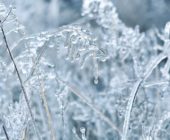

From cooler weather to pumpkin-spiced everything, there are tons of things to love about the fall. And cooler temperatures mean most of us will be spending an ample amount of time outdoors. Even though the weather will be wonderful, time spent outdoors creates a greater risk of coming in contact an allergy like fall hay fever.
If you suffer from allergies, you’re not alone. One in five people in the United States suffers from seasonal allergies. In most parts of the world, allergies are a spring season issue. But those of us in the south know that fall allergies can be particularly miserable.
Allergies have been at their worst in a while because of a drastic change in weather this summer in the south. The floods, rain and climbing heat have caused an uproar in allergy-related illnesses. And since allergies vary by season, it’s important to know which allergens you are more likely to encounter with the next change of season.
Autumn means weed season and ragweed is the number one culprit for fall allergies. It triggers asthma, eczema and pink eye. Mold and cedar are also big issues in the fall and will likely remain an issue this year due to the abundance of humid and wet air. These allergens easily travel through the air, making it almost impossible to escape. They are easily inhaled and will sneak up on you at any given time during the cooler seasons. Mold and ragweed last all throughout the autumn and cease at the first frost of winter but since Texas doesn’t see cold weather that often, these allergens can continue into the winter and spring seasons.
It’s important to make sure that your indoor air quality is of the utmost standard. Poor indoor air quality can lead to allergy symptoms like a runny nose, cough, sneezing and itchy eyes. To avoid unhealthy air quality, regularly check and change your air filters. Dust, mold and other allergens can build up in your filters and enter back into your home if the filter gets too clogged. This can cause an outbreak of allergy issues at any time of year but especially in the fall when we begin to turn on our home heating systems.




